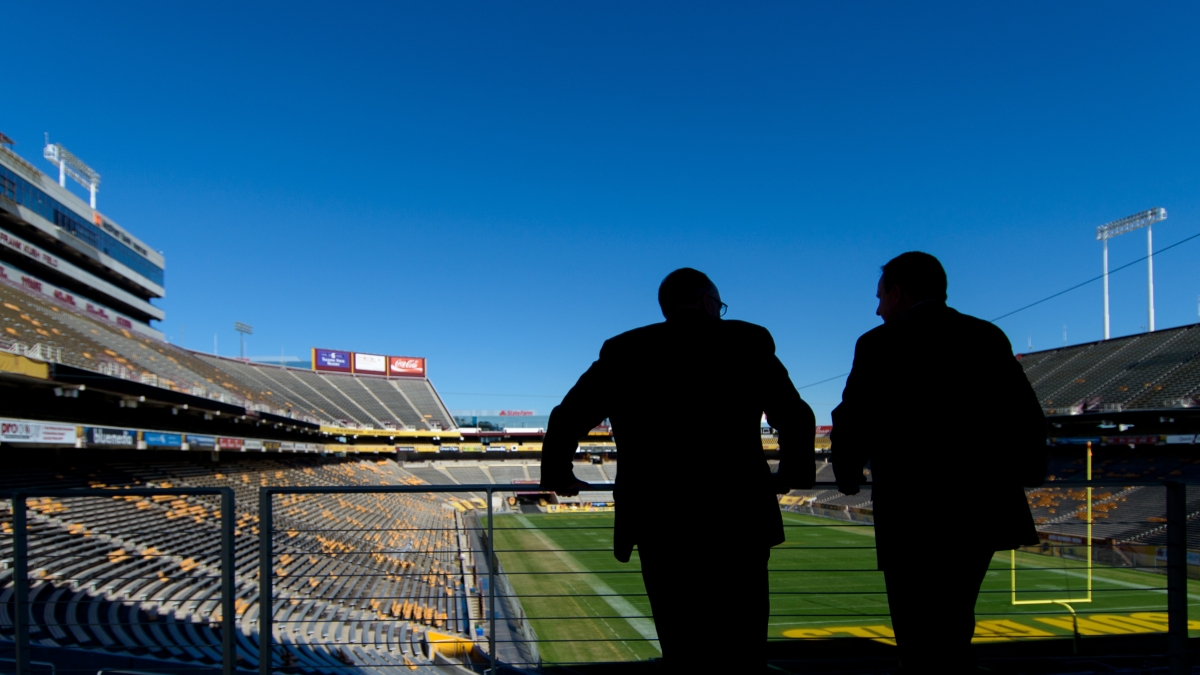Arizona State University’s 52-37 victory in Tempe over archrival University of Arizona provided an exciting finish to this year’s home games.
In years to come the excitement on the university’s home field may extend to more than just big games as ASU seeks to transform what today is primarily a football venue into a community and cultural hub available for use year round.
Sun Devil Stadium has previously hosted a pope and a president, rock concerts and local events, but the location is usually unused for much of the year.
So to coincide with the kickoff this week of Phase II of the stadium renovations, which will focus on fan experience, accessibility, and will incorporate a 360 degree walk around the entire stadium, an open house was held to solicit ideas about other activities that could be hosted at the facility.
“We want Sun Devil Stadium 2.0 to weave together athletics, student life and the vibrant community that surrounds ASU,” said Colleen Jennings-RoggensackJennings-Roggensack is the Executive Director of ASU Gammage and Associate Vice President Cultural Affairs for ASU., who will program and manage additional events at the revitalized facility. “The stadium-between-the-buttes can play host to competitions and celebrations of academics and the arts and community success.”
The community seems to have embraced the idea. At the open house, guests were invited to suggest the types of events they would like to see held at the new stadium once renovations are complete. Playing host to the X Games, Shakespeare plays and Cirque du Soleil were just some of the ideas offered up as possibilities.
“It would be cool to see this place as more of a hangout,” said graduate student Sasha Grabovac. “Seeing the stadium used for, like, a concert or a Super Bowl [party]. It’d be great to see it filled for that reason.”
The extent to which the facility becomes a multipurpose venue will depend upon creative thinking and philanthropic support, but Jennings-Roggensack is no stranger to big events. She co-chaired the 2004 presidential debate at ASU, served as a Super Bowl XXX vice-chair, is a current Tony Awards judge and has held a host of leadership roles in local and national civic and arts organizations.
Now, with her attention turned towards the stadium, she sees the possibility of great things with the support of the community.
“The stadium should be infused with life and learning as never before,” she said.
Ray Anderson, the vice president for university athletics and athletics director, agreed.
“The process of renovating this iconic gathering place for Sun Devils of all generations has opened our minds to the potential for this space to be reinvented in such a way as to serve as a resource for other student, alumni and community activities when this real estate is not being used for football,” he said.
“Sun Devil Stadium can be an asset for much more than just football games during the fall.”
More University news

Professor recognized with prestigious award for mathematical excellence
Zilin Jiang, assistant professor jointly in the School of Mathematical and Statistical Sciences and the School of Computing and Augmented Intelligence, and a team of researchers…

Unraveling molecular mysteries
Imagine being able to see something as tiny as a single molecule, which is a billion times smaller than a meter. Now imagine trying to keep track of it in motion, something even super-resolution…

ASU researcher awarded $1.25M to develop programmable, targeted drugs
In a significant stride for medical research, Hao Yan, a professor in Arizona State University’s School of Molecular Sciences and the Biodesign Center for Molecular Design and Biomimetics, has been…
